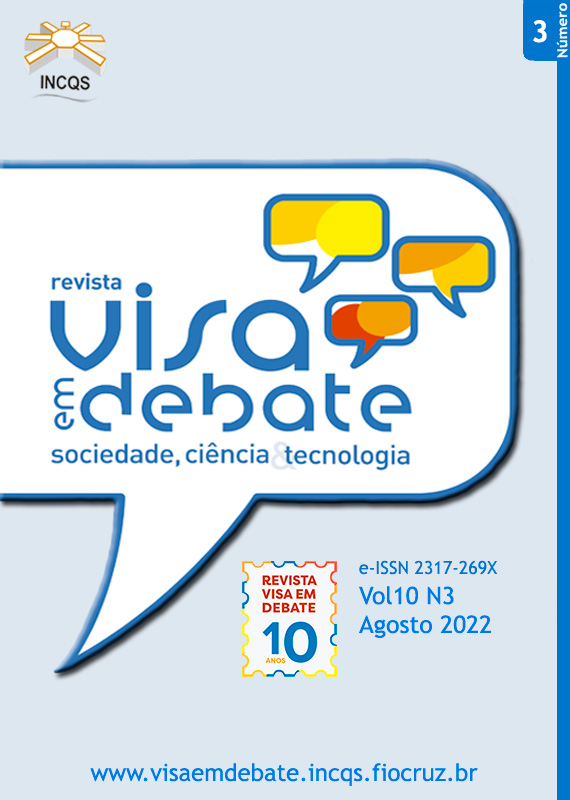Phytosurveillance: evaluation of interactions and adverse reactions of herbal medicines on the market
DOI:
https://doi.org/10.22239/2317-269x.02008Keywords:
Health Surveillance, Phytosurveillance, Adverse Reactions, Herbal MedicinesAbstract
Introduction: The use of medicinal plants as active plant pharmaceutical ingredients (APPIs) as well as the use of herbal medicines and their associations with other herbal medicines and synthetic active pharmaceutical ingredients (API) can result in interactions that affect the efficacy and safe use of these. The main means of reporting adverse drug reactions (ADR) is voluntary, which makes the identification and monitoring of these ADRs difficult and portrays the importance of pharmacovigilance in our country, highlighting the need to strengthen the culture of reporting adverse drug events (ADE). Objective: To analyze the occurrence of ADR related to the simultaneous use of five herbal medicines with other synthetics, describing possible synthetic APPI-API interactions. Method: A literature search was carried out on synthetic APPI-API interactions and their notifications of ADR by the main pharmacovigilance systems in the world. Results: The main interaction mechanisms between synthetic APPI-API involve the metabolism by enzymes of the CYP450 family or the action of efflux transporters such as P-gp. In addition, a large part of phytotherapeutic AEM may not be being notified, generating possible underreporting of this information in the world. Conclusions: On ADR containing APPI from Ginkgo biloba, Hypericum perforatum, Matricaria recutita, Allium sativum and Zingiber officinale, 7,571 were reported worldwide, classified by continent, in the period 1971 to August 2021, as well as the list of plant species on the list of RENISUS that have reported effects on CYP enzymes (1A2, 2C9, 2C19, 2D6 and 3A4), levels of GSH, UGT and P-gp activity.
Downloads
Downloads
Published
Issue
Section
License
Copyright (c) 2022 Ana Paula da Silva Roxo, Elizabeth Valverde Macedo , Samanta Cardozo Mourão , Thalita Gonçalves Barros, Emeli Moura de Araújo, Carlos Augusto de Freitas Peregrino, Marcela Miranda Salles

This work is licensed under a Creative Commons Attribution 4.0 International License.
COPYRIGHT ALLOWANCE The author (s) hereinafter designated as the ASSIGNOR hereby assign and transfer, free of charge, the ownership of the copyrights related to this ARTICLE to the Vigilância Sanitária em Debate: Sociedade, Ciência & Tecnologia (Health Surveillance under Debate: Society, Science & Technology) – Visa em Debate, represented by FUNDAÇÃO OSWALDO CRUZ, established at Av. Brasil, nº 4365, Manguinhos, Rio de Janeiro, RJ, Brazil, CEP 21045-900, under the conditions set out below: (a) The terms and conditions set forth in this Agreement shall apply to the following: 1. The ASSIGNOR declares that they s(he) is (are) the author (s) and owner (s) of the copyrighted property of the ARTICLE submitted. 2. The ASSIGNOR declares that the ARTICLE does not infringe the copyrights and / or other property rights of third parties, that the disclosure of images (if any) has been authorized and that they s(he) assume(s) full moral and / or property liability for its content, before third parties. 3. THE ASSIGNOR assigns and transfers all copyrights relating to the ARTICLE to the ASSIGNEE, especially the rights of editing, publication, translation into another language and reproduction by any process or technique. The ASSIGNEE becomes the exclusive owner of the rights related to the ARTICLE, and any reproduction, totally or partially, is prohibited in any other means of publicity, printed or electronic, without prior written authorization from the ASSIGNEE. 4. The assignment is free and, therefore, there will be no remuneration for the use of the ARTICLE by the ASSIGNEE.






